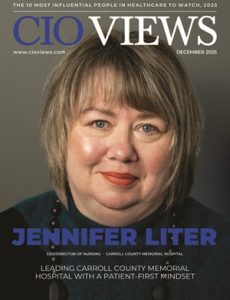It was a cold morning in Chesapeake when Samantha and John realized their dream of moving to a bigger home might have to wait. They’d managed to lock in a three percent mortgage during the pandemic, and the thought of trading it for one hovering near seven percent made them balk. “We’d love more space for our growing family, but it doesn’t make sense to lose our rate and pay more for less,” Samantha said. Across the country, similar calculations are keeping would-be movers in place and creating a deep freeze in the U.S. housing market.
Analysts at J.P. Morgan Chase expect house prices to rise only around three percent in 2025 and foresee mortgage rates easing only slightly to about 6.7 percent by year’s end. Demand, as measured by existing home sales, remains exceptionally low, and although new homes and speculative construction are up, the supply of houses for sale is still well below historical averages. With many homeowners “locked in” to ultra-low rates and reluctant to sell, inventory is constrained, pushing the market toward what economists describe as a stalemate.
Few people see that stalemate as clearly as Douglas Hoven, a Navy veteran turned real-estate agent who serves the Hampton Roads region. Hoven spent eight years aboard submarines before working as a lead test engineer for the government and eventually joining RE/MAX Prime’s Ron Sawyer Team. That technical background, he says, taught him to approach problems systematically. “On a submarine, you learn to stay calm under pressure and make decisions with the information you have. Real estate requires the same discipline,” he said in a recent interview. Hoven typically closes half a dozen transactions a month and is licensed in both Virginia and North Carolina. He has watched the 2025 market develop into what he calls “the great pause.”
So how should buyers and sellers respond? First, Hoven advises his clients to accept that the market has changed. “We can’t wish the old rates back. We have to deal with the rates we have and structure deals that make sense,” he says. That might mean exploring creative financing tools such as temporary buydowns, in which the seller pays to reduce the buyer’s interest rate for the first few years; assuming a seller’s existing mortgage when possible; or looking at adjustable-rate loans for those confident they can refinance later. “These strategies aren’t for everyone, but they can bridge the gap until rates come down,” he adds.
Patience is the other essential ingredient. With fewer listings hitting the market and many buyers waiting on the sidelines, the right property can take longer to find. Hoven encourages clients to spend that time getting their finances in order—paying down debt, improving credit scores and building cash reserves for down payments and closing costs. “This is a good year to clean up your balance sheet. When a home does come along that fits, you’ll be ready to act quickly,” he says. His team keeps an eye on micro-markets within the region, identifying neighborhoods where inventory is slightly higher or where new construction is coming online. He notes that builder inventory has grown nationally, a sign that buyers who are willing to consider a newly built home might find more options than they expect.
For sellers, the frozen market doesn’t mean it’s impossible to transact, but it does require a realistic approach. “Buyers are cautious, and they know they’re paying a premium for financing,” Hoven says. “If you need to sell, price it correctly from the start. Homes that are overpriced sit; homes that reflect the market move.” He advises clients to invest in minor improvements—fresh paint, landscaping, HVAC service—to make their homes stand out without overspending. With listings sparse, serious buyers will still make offers on well-presented properties. Some are willing to negotiate closing-cost assistance in lieu of price cuts, another example of creative deal-making in a high-rate environment.
Hoven also stresses the importance of working with a professional who understands the local dynamics. National headlines often mask significant regional variations. Fixr’s 2025 real-estate report shows that while states like Florida and Vermont have seen modest price declines, others such as New Jersey and Rhode Island have experienced year-over-year increases approaching seven percent. “Our market here has pockets that behave very differently,” Hoven notes. “One neighborhood might still have bidding wars, while another sees homes linger. Data matters.”
Looking beyond the immediate freeze, Hoven believes in real estate as a path to generational wealth. He follows his own advice, aiming to buy a rental property each year as part of a long-term plan. “I encourage clients to think beyond their primary residence. Owning investment property is a hedge against inflation and a way to build equity over time,” he says. This perspective can also ease the disappointment of waiting out a slow market; preparation today can lead to opportunities tomorrow.
For Samantha and John, that meant staying put a little longer while saving for a larger down payment. They refinanced a car loan to lower monthly expenses and began touring new construction in nearby counties, where incentives such as interest-rate buydowns were more common. They also learned that the “pause” can be empowering. “Doug helped us see that there’s no rush,” Samantha says. “When the right house appears, we’ll be ready. Until then, we’re making the most of what we have.”
In a year when the housing market seems frozen in place, Hoven’s counsel is refreshingly patient: understand the numbers, prepare diligently and stay flexible. The thaw will come eventually, and those who remain attentive will be ready when it does.





